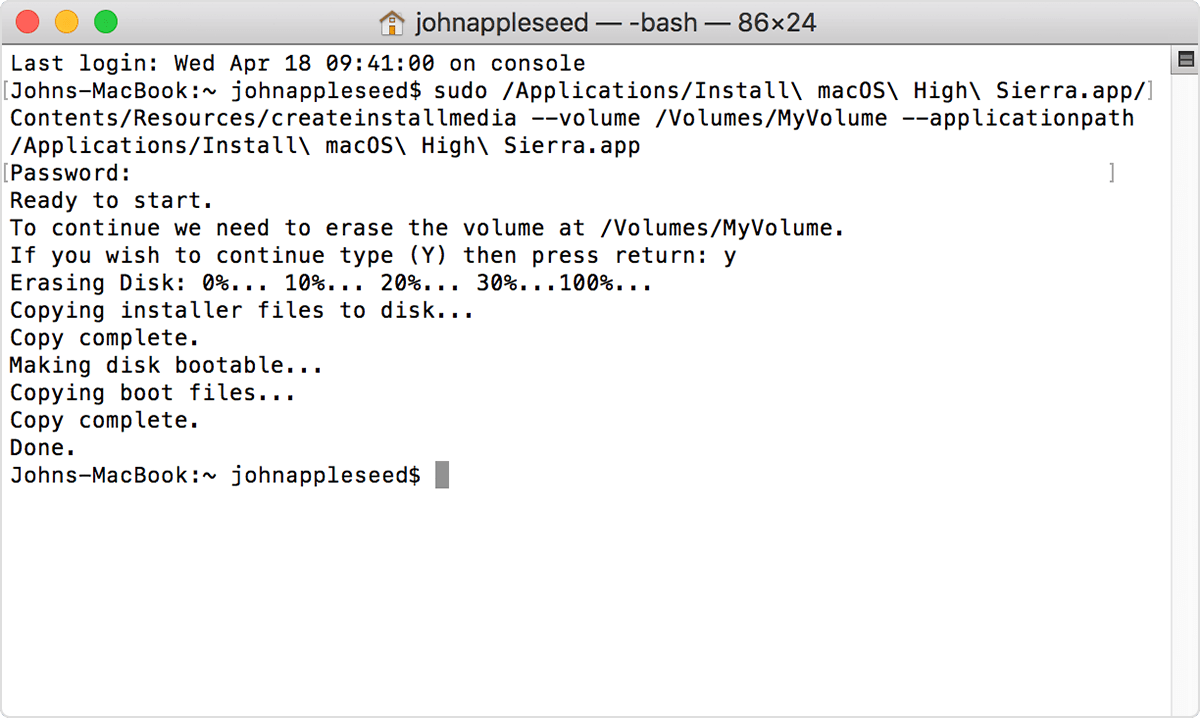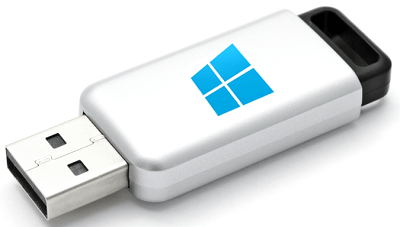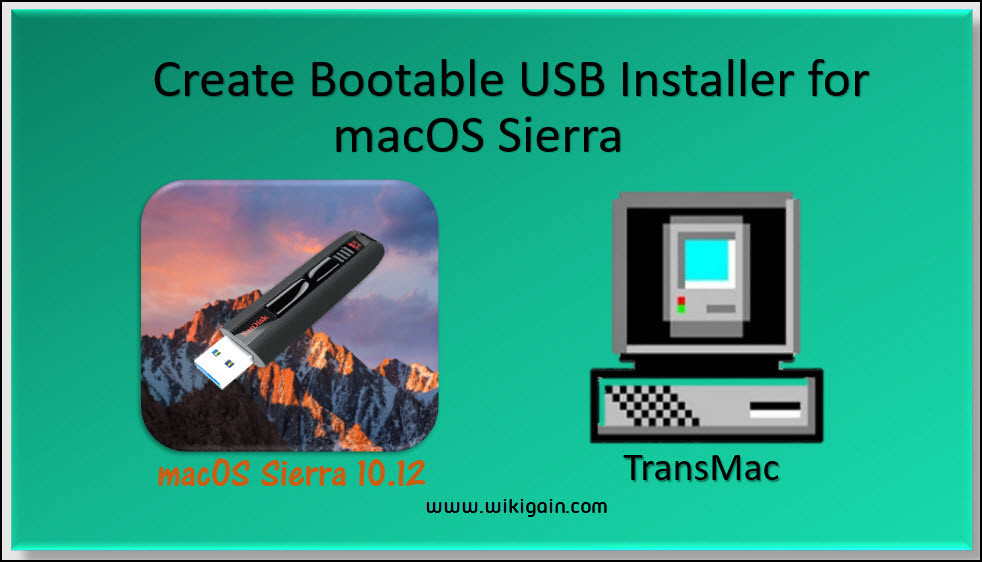Create Bootable Usb Drives For Mac
How to create a bootable MacOS USB. From Linux you can read and write Apple-compatible HFS+ disk images. By creating an El Capitan recovery disc, you can then create an installation disc, and then access the App Store for other free installers, such as Catalina and Mojave. Create Bootable USB for Mac on Windows 10, Mac and Windows file system is completely different, so you are not able to create bootable USB for Mac with PowerShell, CMD or Rufus.If you remembered, till MacOS sierra the Apple file system was Hackintosh, but MacOS 10.13 High Sierra has the technology of Apple Filesystem. That’s why we can’t create bootable USB with Windows tools. If you want to do a clean install of macOS Sierra, or you have multiple Macs to install it on, then a bootable flash drive for is your best bet for easy installation. Here’s how to make one.
Sep 21, 2020 • Filed to: Solve Mac Problems • Proven solutions
Creating a bootable drive for your Mac certainly seems to be a wise decision to make. Even though the macOS recovery partition can take care of all your recovery requirements in times of need, it’s still worthwhile to have a bootable installer.
Why Do You Need to Create A Bootable Drive For Your Mac?
- The Mac installer gets deleted as soon as you download it and use it by installing the Mac operating system. Once the installer gets deleted, it means that you can no longer use it to install the macOS on another Mac device. You will have to again download the installer on the latter Mac to install the macOS. This can take a lot of time and become inefficient if you have multiple Macs.
- Clean installs can be performed by installers which are very helpful in overwriting your start-up drive. You can also use this function for other troubleshooting issues as well.
- When you have a bootable installer, it ensures that you are well guarded in an emergency scenario by making use of some of its helpful utilities.
- A bootable installer can allow you to install an earlier version of macOS and also let you temporarily boot into the previous version of the macOS.
What Do You Need Before Creating Your Bootable Drive?
Before you begin the process, you will need the following:
- USB Stick / External Hard Drive: If you are planning to use a USB for downloading the bootable version of the installer, make sure that it is 8GB in size or larger than that. In the case of Sierra, 12GB is recommended as the minimum requirement. Ideally, 32GB to 64GB is a good size to have as it is not only cost-effective but also gives a better performance. In the case of an external drive, you can use any spare one that you are not going to use for any other work.
- Download macOS High Sierra Installer: It is important to note that once you have downloaded the installer, it will begin with the installation process on its own. You can close the installer just like you quit any Mac app. In the case of the macOS version being older than the current one, you can click on ‘ok’ once the message flashes that the version is too old to install. You can find the old installer file in your ‘Application Folder’. Don’t forget to take a backup of your Mac to be on a safe side.
Part 1. How to Create a Bootable Drive Using Terminal
There are two ways of creating a bootable copy of the installer. You can either use Terminal or get the job done through a free software like Recoverit to do it for you. First, let us look at how to create a bootable drive using Terminal.
Steps to create a macOS Siera beta boot disk:
- The first step in the process is to connect your external hard drive to your Mac. You need to name your external drive ‘untitled’ for the Terminal command to work.
- Launch Terminal. You can find this in the 'Utilities' folder of your Applications folder.
- Copy the following instructions now:
- In this step, you have to paste the copied instruction on the screen by going back to the Terminal.

- You will be required to feed in your user password now and then hit ‘Return’.
- Now, the Terminal will ask for your permission to erase the drive. To continue, type ‘Y’ and again hit return.
- After the Terminal has erased your drive, your Mac will prompt you if you wish to use the drive for Time Machine. Click ‘Don’t Use’.
- Next, the installer file will be copied by the Terminal to your drive. This might take some time, so be patient.
- Once the copying is completed, a ‘Copy complete’ message will be displayed on your screen. You can now quit the Terminal and use your drive.
Part 2. How to Create Bootable Media for Mac with Recoverit Mac Data Recovery

Recoverit Mac data recovery software is one of the most impressive and easy-to-use data recovery software in the market, and it has lots to offer with its varied utilities and functions. With Recoverit to create bootable media, you can access your system easily without the need to reinstall the macOS to recover your lost data.
Step 1 Launch Recoverit and get to select 'Computer Crash Recovery'. Click 'Start'.
Step 2 Choose your connected external hard drive as the bootable media, and click 'Start'. You will receive a requirement of formatting the device. Before the formatting, remember to back your drive data up.
Step 3 Wait for a while, and Recoverit will format your drive and start creating the bootable media.
Step 4 Once it finishes, follow the next steps to restore data.
Part 3. How to Set the Computer Boot from the Bootable Media
Step 1 Connect your external drive to your unbootable Mac.
Step 2 Press down on the ‘Option’ key after restarting your Mac.
Step 3 Once the booting has finished, your Mac will display the Startup Manager to show you the available boot drives. Select your external hard drive and hit ‘Return’.
Step 4 If you want to install Sierra but keep your data untouched, you can select 'Install OS X'. However, if you wish to delete all your data, then you can select Disk Utility to format the entire drive and wipe away all your data to reformat the internal drive first and then install macOS Sierra.
You now have a bootable copy of the macOS Sierra installer, and you can use it on multiple Macs to install the Mac OS. If you are familiar with the command line, you can opt to create a bootable drive using Terminal. For others, you can simply opt for reliable Mac hard drive recovery software like Recoverit and assist you in recovering your data as well from crashed systems in case of emergencies.
What's Wrong with Mac
- Recover Your Mac
- Fix Your Mac
- Delete Your Mac
- Learn Mac Hacks
Sep 28, 2020 • Filed to: Solve Mac Problems • Proven solutions
A Universal Serial Bus or USB Drive, also known as a flash drive is a portable data storage device that includes a memory which includes a USB interface. It is typically removable and much smaller than an optical disc. Any sort of data can be stored in this device. The drives are available in various sizes and as of to date, the 2TB(Tera-Byte) flash drives in terms of storage capacity are the largest ones available in the market.
Today, these drives are one of the most consumed used devices in the world. Thanks to their portable nature, affordability, and compatibility, USB drives are being used to send and receive endless information across a surplus of networks and platforms all around the globe. This small tool has opened the world to a stream of limitless options with respect to storing, transferring, copying data, and much more. One of them includes Booting the Mac from such a device.
Part 1. Reasons for Mac Boot from USB
Booting the Mac from USB in a way gives the power back to the user. The likeliest of the reason for choosing the boot from the USB method is that your Mac won't start which denies the user access to the computer. Using an external source like the USB drive helps the user get around the problem. It provides the user access to the contents of the internal drive, assuming the data is safe and not corrupted. It also helps to repair the Mac disk with Disk Utility and other tools. Here are the top reasons why the user should choose to Boot Mac from USB:
- Allows the user to install a different version of macOS.
- It allows the user to test a new version before you make the decision to upgrade.
- Allows risk-free testing of the Beta version.
- Faster and efficient.
- By installing older versions through USB, it permits certain Apps to run which are not compatible with the latest macOS.
Part 2. Preparations for Booting Mac from USB
To ensure a risk-free procedure certain measure should be taken:
- The user should buy a name-brand flash drive.
- The USB should contain 16-32GB of free space.
- The user should scan the flash drive with some reputable Anti-Virus software.
- The user should check to see what size of ports they have on the Mac. A 12' Mac only contains a single C-Type port.
- Make sure to purchase the C port flash drive to avoid any inconvenience.
- It is advised that the user should go with a USB 3.0 supported drive, with a size of 16GB to ensure a swift transfer of data.
- The USB drive should be formatted with a supported GUID partition.
- It should contain an OS X installer or a usable operating system to work with.
Part 3. How to Create Bootable USB on Mac
There are a few general guidelines that can help get your machine started which are mentioned above, regardless of the OS the user prefers. Here are the methods to create a bootable USB drive on Mac.
Creating a Bootable USB Using Terminal
The terminal is the default gateway to the command line on a Mac. It is just like the Command Prompt feature works for MS Windows. The Terminal feature ensures a hassle-free experience for the Mac user without the conventional pointing and clicking, the user just has to type the commands and the computer does the rest. The user can find Terminal in the Applications > Utility folder or it can be checked in the finder utility.
Make Bootable Usb Drive For Mac On Windows
Using the Terminal feature is the most simple way to create the bootable USB drive. The user just needs to follow one easy step which is renaming the MyVolume portion of the command with the name of the drive. The name of the drive can be changed using the Disk Utility of Mac. Here are the steps required after opening the Terminal feature to create a bootable USB drive.

- Copy and paste the command which is suited for the version of the operating system into the Terminal window.
- The command for MacOS Mojave is as follows:
sudo/Applications/InstallmacOSMojave.app/Contents/Resources/createinstallmedia --volume/Volumes/MyVolume - Press the Return key.
- Enter the password.
- Confirm to erase the USB drive by typing Y followed by the Return key.
- The terminal will erase all the data inside the drive and create the bootable USB drive.
If there is a need to install a different version of the operating system then the user just has to replace the above-underlined command with their desired version of OS. For example, if the user wants to install Mac OS Sierra instead of Mojave then they would have to replace 'Mojave.app' with 'Sierra.app' inside the command line.
Part 4. How to Boot Mac from USB Media
After creating a bootable USB drive, the user simply needs to plug the created drive into the open port on the Mac. Here are the steps to boot Mac from the USB flash drive:
- Power on the system.
- Press and hold the Option (Alt) key on the keyboard when the computer starts.
- Select the USB drive as a startup disk when the option appears.
- The system will start the boot process off the USB drive.
- Install the operating system from the macOS utilities.
- Data can be restored by using the Time-Machine backup option.
Video Tutorial on How to Boot Mac into Recovery Mode
Part 5. How to Recover Data from Unbootable Mac
The Mac becomes unbootable when the BIOS which is a firmware that is used to perform hardware initialization during the booting process fails to recognize the startup process. It usually happens when there is a failed system update, system crash, damaged MBR, or when the drive becomes corrupt.
Recoverit Mac Data Recovery software is the most efficient option to recover all the lost data when Mac becomes unbootable. Developed by Wondershare, Recoverit is one of the most preferred recovery tools in the world. The tool provides an instant preview of what is recovered after a detailed scan. It allows us to connect almost every type of portable device and recover data from them. Data can be restored by performing the recovery and repair process. The process involves the installation of the Recoverit software that offers users the chance to get back the important data that they had lost.
Step 1. Create a Bootable Media
To recover data from an unbootable Mac, you need to create a bootable media first.
- Installation: Please Install Recoverit by clicking on the icon.
- Select an option: For your crashed Mac, please choose the 'Computer Crash Recovery' option.
- Initiate Recovery Process: Click on 'Start' for the recovery process to launch.
- Create Bootable Drive: Select the 'Create USB bootable drive' option and click on 'Create'.
- A pop-up dialogue will appear that will prompt the user to format the USB drive.
- Format the Drive: Click on 'Format' Now.
- Recoverit will show you the process of formatting the USB drive and creating a bootable drive.
- After a while, the bootable drive will be built up. And please follow the guides which Recoverit shows you.
Step 2. Recover Data from Crashed Mac
Here are the following steps required to recover data from an unbootable computer.
Create A Bootable Usb Drive For Mac High Sierra
1. Select the Location

When you launch Recoverit, you can select a location to scan. In this case, we will be performing data recovery on Mac's internal hard drive (Macintosh HD) instead of any other connected source.
2. Scan the Location
As soon as you would click on the 'Start' button, Recoverit will take the needed steps for data extraction. If you want positive results, then try not to close the application in between.
3. Preview and Recover
When the data recovery process is completed, the application will display the results on the interface. You can go to any category of your choice from here and preview the retrieved content. Make the needed selection and click on the 'Recover' button to save your files to a secure location.
All hope gets lost when the computer becomes unbootable and the data gets deleted. Recoverit recovery software is the most convenient program when it comes to retrieving lost data from the computer.
Installing the macOS from a USB flash drive gives the user an instant solution when the Mac installer due to some reason refused to work. The method to create a bootable drive is easier than it sounds. Now, you know what to do whenever you want to upgrade your macOS from a bootable external source by following different methods to ensure a safe and hassle-free process. If you lose valuable data when the Mac becomes unbootable then you can easily recover the lost files by using the Recoverit recovery software. Recoverit guarantees data recovery in no time.
What's Wrong with Mac

- Recover Your Mac
- Fix Your Mac
- Delete Your Mac
- Learn Mac Hacks
